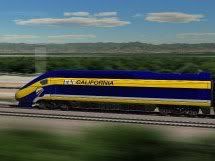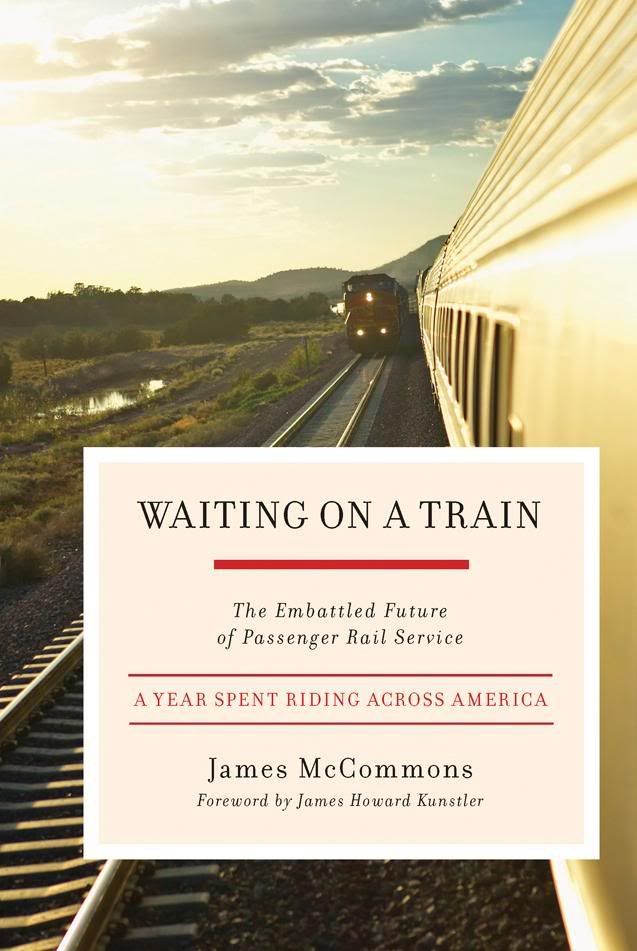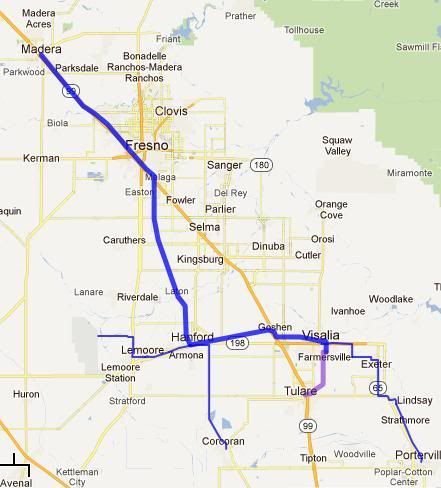Burning the Midnight Oil for Living Energy Independence
 As I mentioned in last week’s Sunday Train, the California HSR Authority came out with a revised draft Business Plan.
As I mentioned in last week’s Sunday Train, the California HSR Authority came out with a revised draft Business Plan.
And why do you revise a draft Business Plan? Because some people suggested some modifications to your previous draft Business Plan might be in order … for instance, if there’s a possibility that you cannot get bonds authorized to start work on the part of the corridor where the Federal Government has already put some funding on the table.
The new, revised, draft Business Plan seems to mark the final passing of the baton from the Judge Kopp absolutist vision of the what an HSR “simply has to be” to the more grounded, realistic vision of Governor Brown …
… and in the process of dragging the HSR Authority back into touch with reality, it is quite possible that Governor Brown has saved the California HSR project.
There are two qualifiers here. The first is that without an account of someone privy to the details of the Governor’s intervention, we won’t know what changes were things the California HSR was on track to doing anyway, and what changes were pushed upon them. But even there, what “the HSR Authority wanted to do” was likely heavily influenced by the changing of the guard from Schwarzenegger appointees to Brown appointees at the Authority.
The second is that getting to work is not yet a done deal. Supporters of the project ~ whether ongoing supporters or those won over by the newly revised plan ~ still need to work to help see the project through to construction of the first construction segment.
The devil is in the details, so we go chasing the devil below the fold.
 Today, the focus is on one lovely rhetorical ploy used by anti-rail advocates to try to put one over on people with limited experience with trains. This relies on the false framing that “trains is trains”, and uses something that is true about a particular kind of local rail transport to mislead people about 110mph Emerging High Speed Rail in particular.
Today, the focus is on one lovely rhetorical ploy used by anti-rail advocates to try to put one over on people with limited experience with trains. This relies on the false framing that “trains is trains”, and uses something that is true about a particular kind of local rail transport to mislead people about 110mph Emerging High Speed Rail in particular.
 Back in the 29 Nov 2009 Sunday Train,
Back in the 29 Nov 2009 Sunday Train,  The Iowa Department of Transport has just completed the Chicago to Omaha Regional Passenger Rail System Planning Study, to select its preferred alignment for a detailed Environmental Impact Report.
The Iowa Department of Transport has just completed the Chicago to Omaha Regional Passenger Rail System Planning Study, to select its preferred alignment for a detailed Environmental Impact Report. Kings County officials have been
Kings County officials have been  One element of the recent California HSR “revised” draft 2012 Business Plan (which we shall call the Other, Other Plan) involves looking to one particular means of finance in addition to general fund bond finance and Federal transport grant funding:
One element of the recent California HSR “revised” draft 2012 Business Plan (which we shall call the Other, Other Plan) involves looking to one particular means of finance in addition to general fund bond finance and Federal transport grant funding:  I saw this story a couple of weeks ago, but between the happenings in California and some unanswered questions I had, I haven’t mentioned it yet.
I saw this story a couple of weeks ago, but between the happenings in California and some unanswered questions I had, I haven’t mentioned it yet.  As I mentioned in last week’s Sunday Train, the California HSR Authority came out with a revised draft Business Plan.
As I mentioned in last week’s Sunday Train, the California HSR Authority came out with a revised draft Business Plan. Nearly a month ago, Yonah Freemark had a post at
Nearly a month ago, Yonah Freemark had a post at  Yeah, OK, its not Sunday, but I got called on Saturday morning after a Friday night class to substitute for a colleague, and that threw me off completely. Fortunately for the Sunday Train, I am massively underemployed, so there is Monday afternoon available to finish composing what I been thinking about this week.
Yeah, OK, its not Sunday, but I got called on Saturday morning after a Friday night class to substitute for a colleague, and that threw me off completely. Fortunately for the Sunday Train, I am massively underemployed, so there is Monday afternoon available to finish composing what I been thinking about this week.
Recent Comments